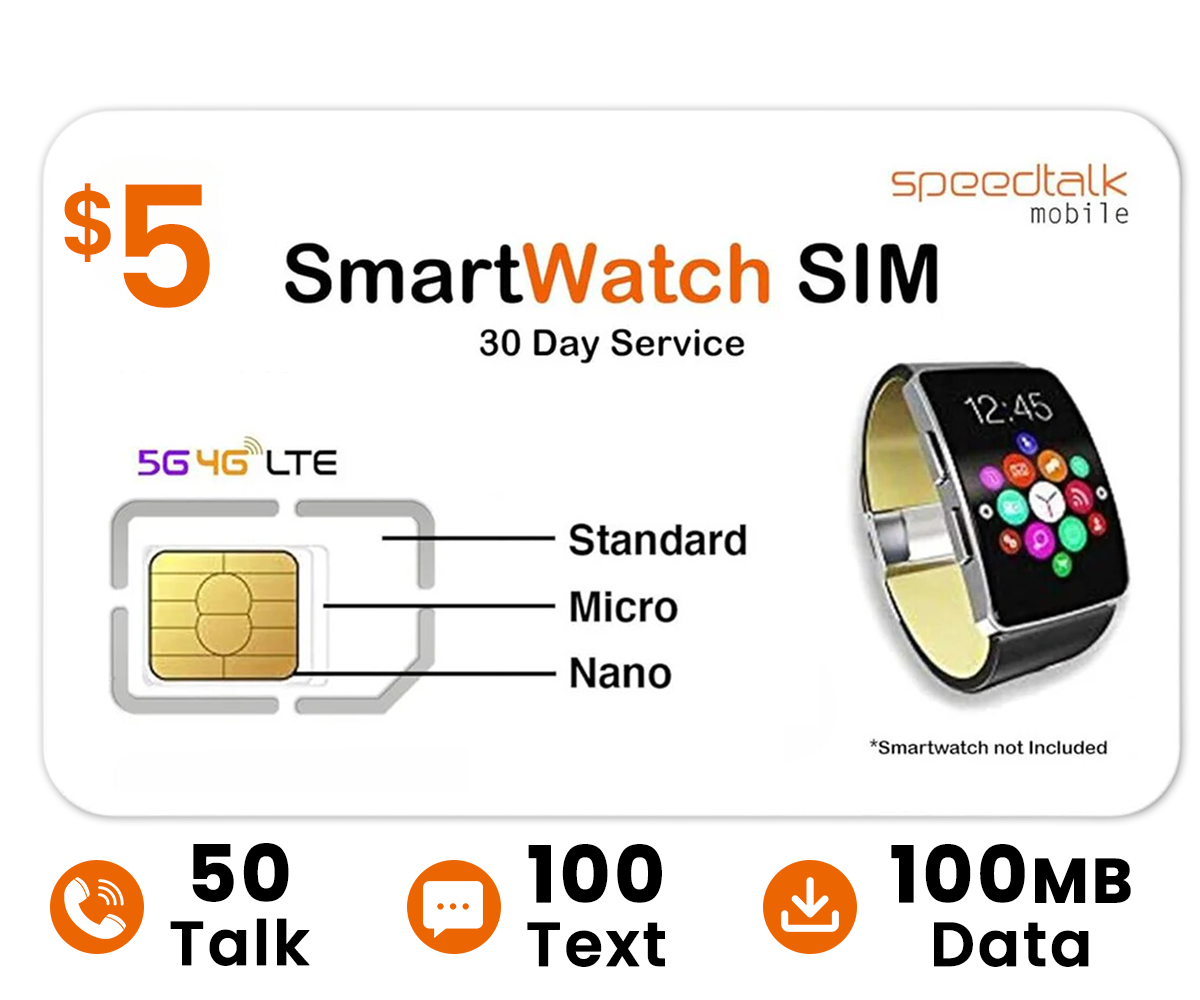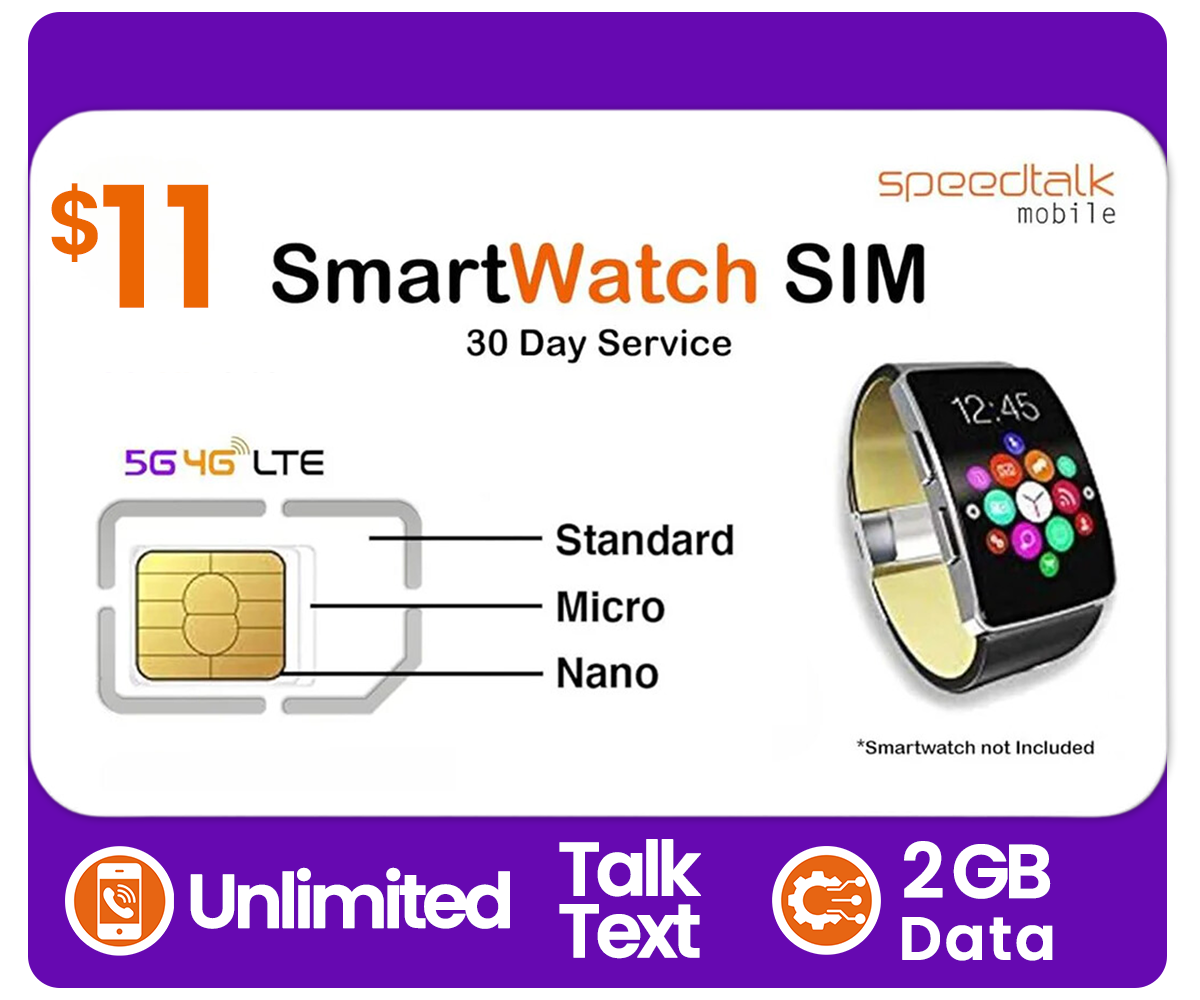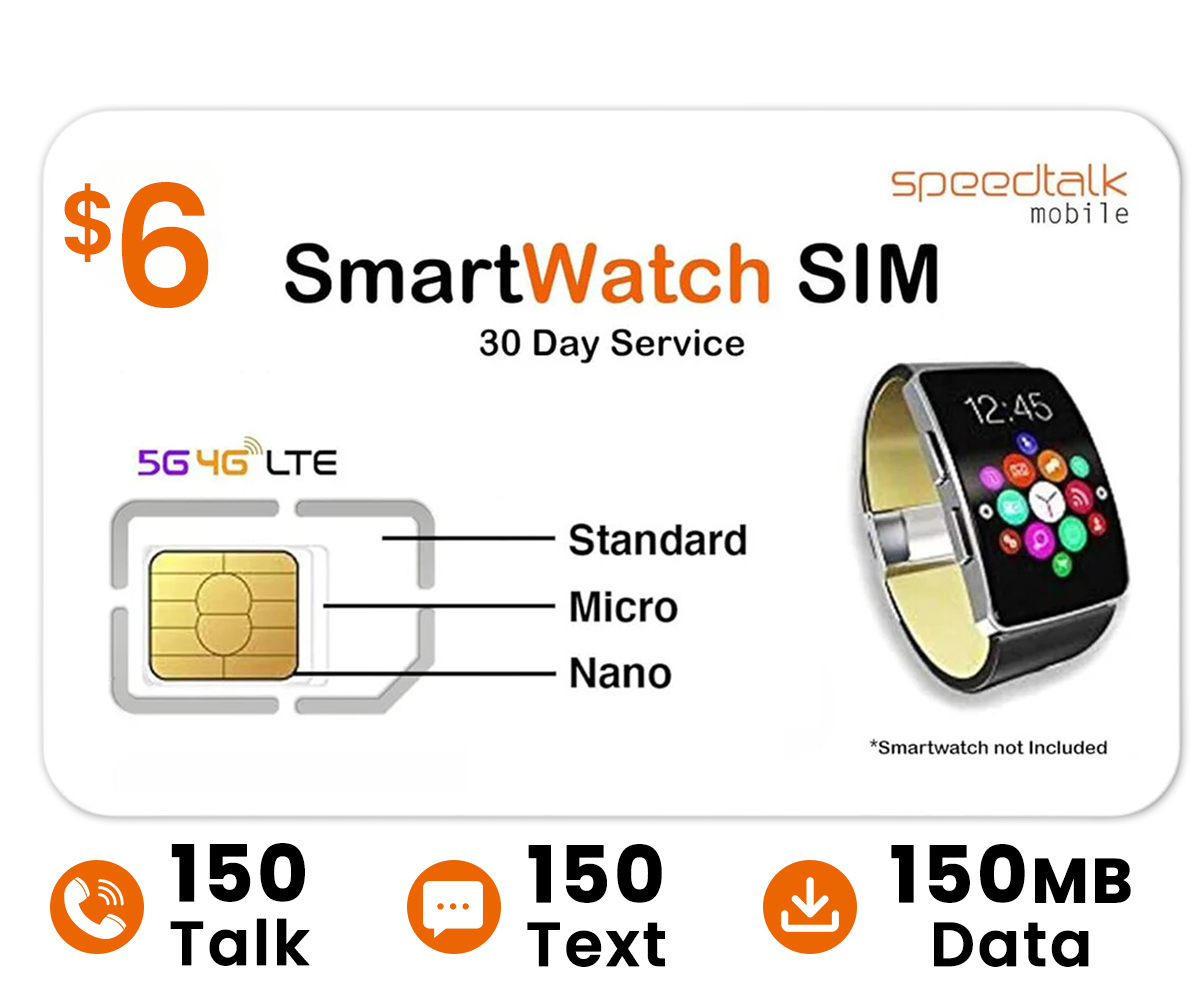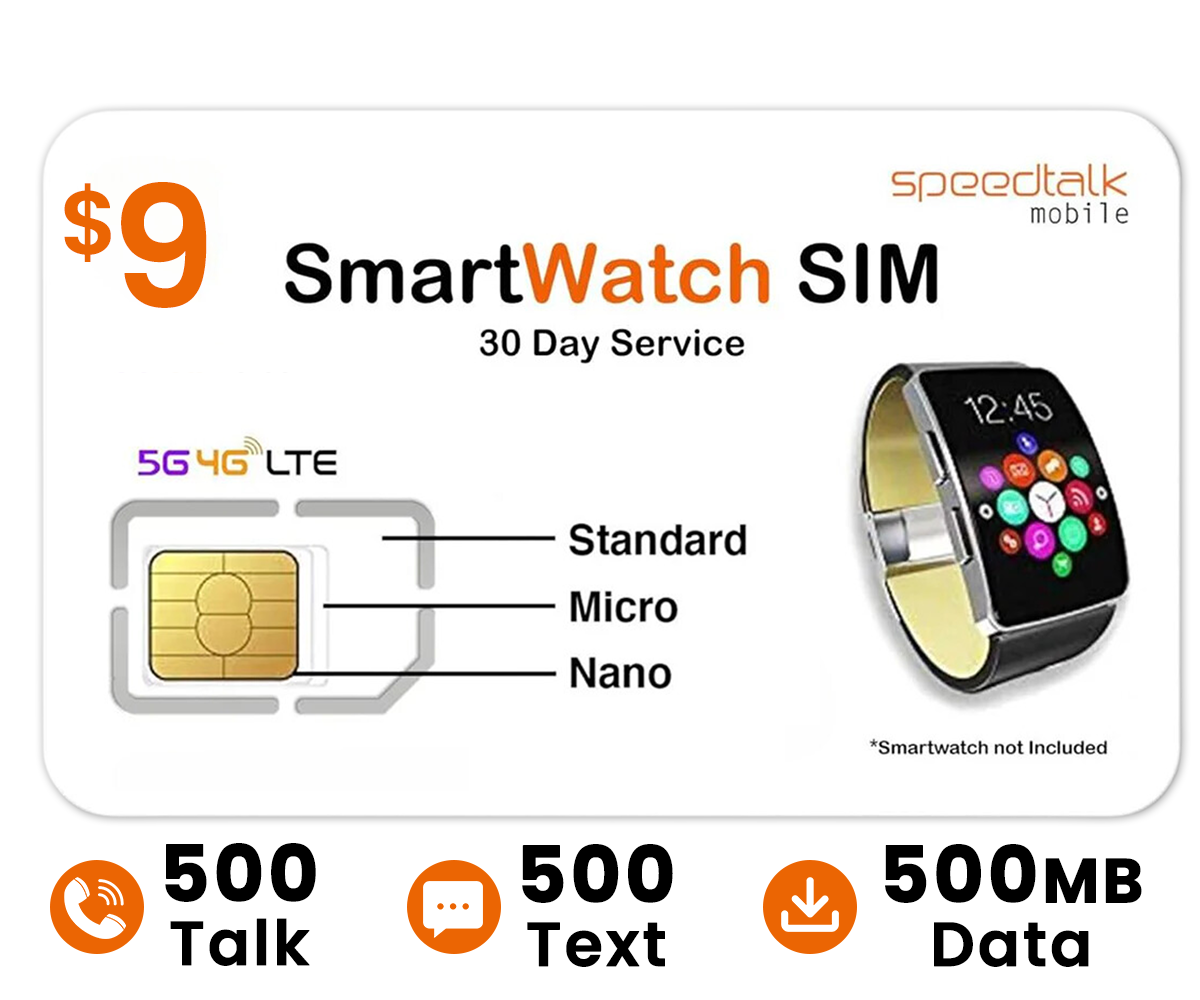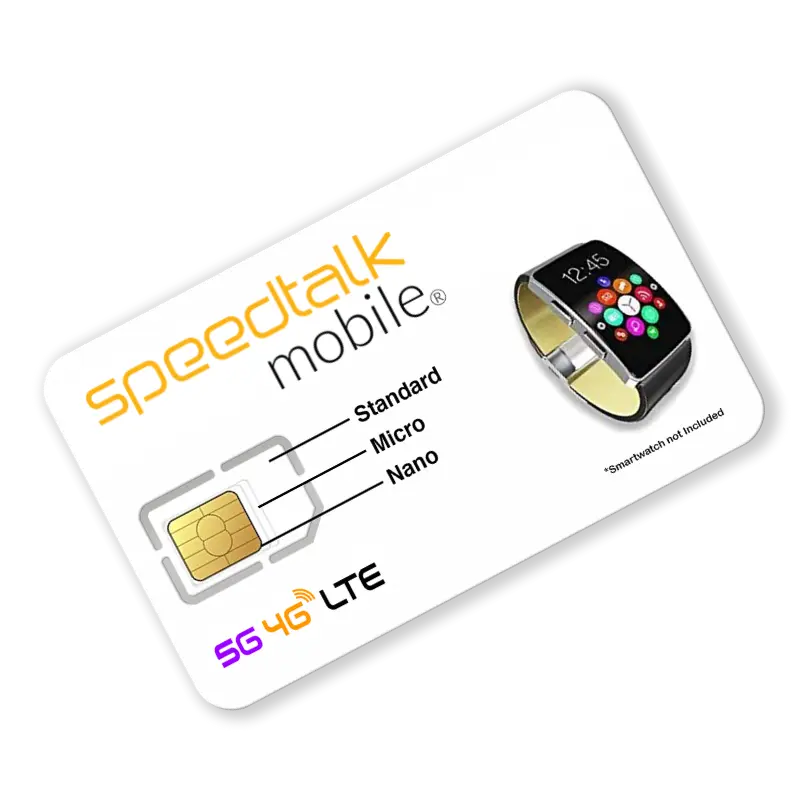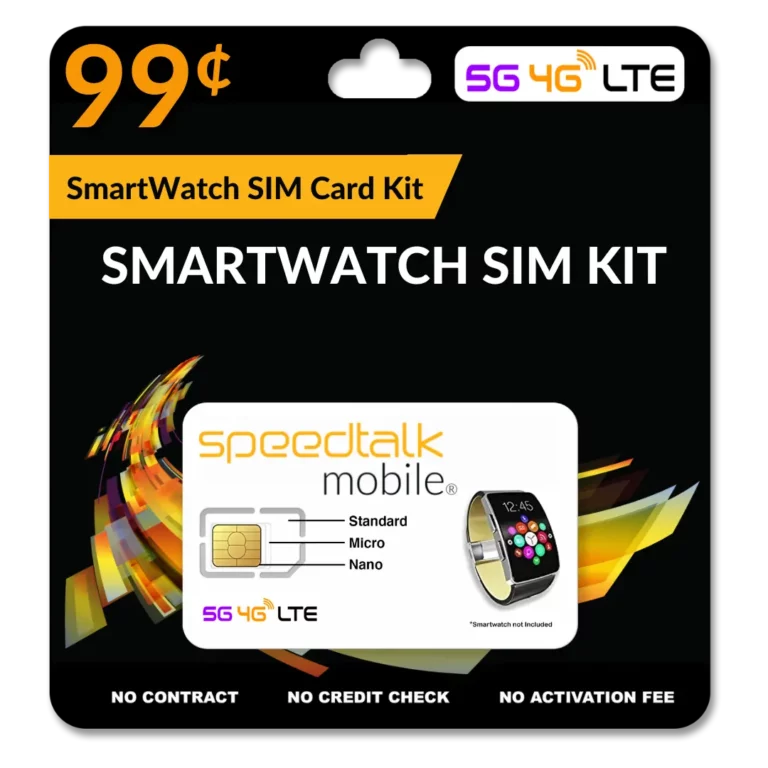Smart Watch Plans
Stay connected on your smart watch device with SpeedTalk Mobile’s secure nationwide network, specifically designed to maximize your device performance.
- Enjoy 5G & 4G LTE data usage with a SIM card and wireless plan that supports the majority of smart watch devices
- Get a free 3-in-1 SIM card that includes standard, micro, and nano sizes to fit any smart watch device. Simply punch out the size you need.
- No contracts, no credit checks, and no activation fees. Smart watch plans renew automatically every 30 days with the freedom to cancel anytime from anywhere.
- Upgrade or downgrade your smart watch plan at anytime with no extra fees or hidden costs.
- Stay connected with SpeedTalk Mobile international roaming service add on feature in more than 200 countries.
Smart watches have come a long way in recent years. They allow you to access notifications from your phone, track your physical activity, and even make phone calls. The best smart watches offer a lot of functionality for a reasonable price.
Smart Watch Compatibility
SpeedTalk Mobile smart watch SIM cards and service plans are compatible with any unlocked 5G/4G, 3G/2G, LTE GSM smart watches such as kids GPS tracker watch, phone watch for kids, adult smartwatches, and senior SOS wristbands. Here are other compatible devices that work with SpeedTalk Mobile SIM card smart watch plans:
Get a prepaid Smartwatch Plan You Want, Without Breaking the Bank
Prepaid smartwatch plans are a newer option for those who want to enjoy the benefits of a smartwatch but don’t want to pay full price. With SpeedTalk Mobile’s prepaid smartwatch plans you get the same coverage for less money. When you can get an Apple or an Android smartwatch but need a plan to have it work the way you need it, Stay connected with our smartwatch plans. Our smartwatch plans, hands down out preform and cost a whole lot less than other companies on the market.


